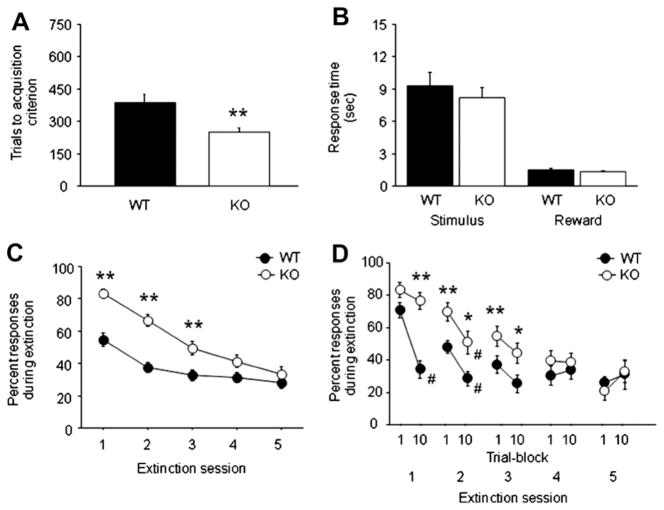Fig. 2.
GluA1 KO mice show faster acquisition and impaired extinction of reward-seeking behavior. (A) GluA1 KO mice required fewer trials than WT controls to acquire a stimulus-response behavior. (B) Stimulus response and reward-retrieval latency was not different between genotypes during acquisition. (C) GluA1 KO mice made significantly more non-rewarded responses than WT during the first 3 session of extinction training. (D) GluA1 KO mice failed to show significant within-session extinction during the first extinction session, and made significantly more non-rewarded responses than WT controls during the first and last trial-blocks during the second and third extinction sessions. n = 34–35 per genotype. Data are Means ± SEM. **p < .01, *p < .05 vs. WT, #p < .05 vs. Trial-block 1.

